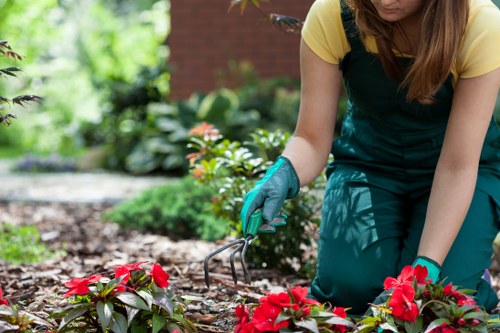Jet Washing Temple: Preserving Sacred Spaces with Modern Cleaning Techniques

Maintaining the pristine condition of temples is essential not only for aesthetic appeal but also for preserving their historical and cultural significance. One of the most effective methods for cleaning temple exteriors and intricate designs is jet washing. This modern cleaning technique offers a powerful solution to remove dirt, grime, and pollutants, ensuring that these sacred spaces remain inviting and well-maintained for visitors and worshippers alike.
Jet washing, also known as pressure washing, utilizes high-pressure water jets to clean surfaces thoroughly. When applied to temples, it meticulously removes years of buildup without damaging the delicate architectural details. This balance of effectiveness and safety makes jet washing an ideal choice for temple maintenance.
Understanding the unique needs of temples is crucial when selecting a cleaning method. Temples often feature intricate carvings, delicate materials, and historical artifacts that require careful handling. Jet washing, when performed by trained professionals, can address these challenges efficiently, ensuring that the sanctity and beauty of the temple are preserved.
Understanding Jet Washing and Its Benefits for Temples

Jet washing has revolutionized the way we approach cleaning large and complex structures. For temples, which are often grand in scale and rich in detail, traditional cleaning methods can be time-consuming and sometimes ineffective. Jet washing provides a swift and thorough solution, making it easier to maintain the temple’s exterior and surrounding areas.
The benefits of jet washing extend beyond mere cleanliness. Regular jet washing helps in the prevention of mold and mildew growth, which can deteriorate building materials over time. By keeping the temple surfaces clean, jet washing contributes to the longevity of the structure, ensuring that it remains a beacon of culture and spirituality for generations to come.
Moreover, jet washing is an eco-friendly option. It typically requires less water than traditional cleaning methods and can be combined with environmentally safe cleaning agents to minimize its impact on the surrounding environment. This is particularly important for temples, which are often situated in natural or serene settings where preserving the environment is paramount.
What is Jet Washing?
Jet washing, commonly referred to as pressure washing, involves the use of high-pressure water jets to clean surfaces. The pressure of the water is adjustable, allowing for gentle cleaning of delicate surfaces or more aggressive cleaning for tougher stains and grime. Jet washers can be equipped with various nozzles and attachments to cater to different cleaning needs, making them versatile tools for temple maintenance.
Why Jet Washing is Ideal for Temple Maintenance
Temples, with their intricate designs and expansive exteriors, require a cleaning method that is both effective and gentle. Jet washing meets these criteria by providing a deep clean without the use of harsh chemicals that could harm the temple’s materials or surrounding vegetation. Additionally, the efficiency of jet washing reduces the time and labor required for cleaning, allowing temple caretakers to focus on other important aspects of maintenance and worship.
The Process of Jet Washing Temples

Implementing a successful jet washing campaign for a temple involves several steps, each tailored to ensure that the cleaning process is thorough and respectful of the temple’s sacred nature. From initial assessment to the final rinse, each phase is crucial in achieving the desired results without causing any damage.
The first step in the jet washing process is assessing the temple’s specific needs. This involves identifying the types of surfaces to be cleaned, the extent of dirt and grime buildup, and any areas that require special attention. Understanding these factors helps in determining the appropriate pressure settings and cleaning agents to use.
Once the assessment is complete, the next step is choosing the right jet washing equipment. High-quality pressure washers with adjustable settings are essential for adapting to the various surfaces and materials found in temples. Professionals may also use specialized nozzles to navigate intricate carvings and tight spaces, ensuring a comprehensive clean without causing any harm.
Assessing the Temple’s Needs
Before commencing the jet washing process, it is vital to conduct a thorough assessment of the temple. This includes inspecting the building materials, identifying areas with heavy soiling, and noting any existing damages or vulnerabilities. By understanding the temple’s current condition, cleaning professionals can tailor their approach to address specific challenges and ensure that the cleaning process enhances rather than detracts from the temple’s appearance.
Choosing the Right Jet Washing Equipment
Selecting the appropriate jet washing equipment is critical for effective and safe cleaning. High-pressure washers with adjustable PSI settings allow for fine-tuning the water pressure to suit different surfaces. Additionally, using eco-friendly detergents in conjunction with the jet washer can enhance cleaning performance while minimizing environmental impact. The use of appropriate nozzles and attachments further ensures that even the most intricate details of the temple are cleaned meticulously.
Eco-Friendly Jet Washing Solutions

In today’s environmentally conscious world, adopting eco-friendly cleaning methods is more important than ever. Jet washing aligns with this trend by offering a sustainable alternative to traditional cleaning techniques. By reducing water usage and eliminating the need for harsh chemicals, eco-friendly jet washing is an ideal choice for temples that prioritize environmental stewardship.
Eco-friendly jet washing solutions focus on using biodegradable cleaning agents that effectively remove dirt and stains without harming plants, wildlife, or the surrounding ecosystem. These cleaning agents break down naturally, ensuring that runoff water does not pollute nearby water sources or soil, which is crucial for temples located in natural settings.
Sustainable practices in jet washing also involve optimizing water usage. High-efficiency pressure washers consume less water while still providing the necessary cleaning power. Additionally, many jet washing professionals implement water recycling systems, capturing and reusing water to further reduce environmental impact.
Environmentally Safe Cleaning Agents
Using environmentally safe cleaning agents is a cornerstone of eco-friendly jet washing. These agents are specially formulated to remove dirt and grime without leaving harmful residues or pollutants. They are designed to be gentle on surfaces, ensuring that the temple’s materials remain intact and undamaged during the cleaning process.
Sustainable Practices in Jet Washing
Adopting sustainable practices involves more than just the choice of cleaning agents. It includes optimizing the jet washing process to minimize water waste, using energy-efficient equipment, and implementing practices that reduce the overall environmental footprint. By integrating these sustainable methods, jet washing not only preserves the beauty of the temple but also protects the environment for future generations.
Case Studies: Successful Jet Washing Projects on Temples

Numerous temples have benefited from jet washing services, witnessing significant improvements in their appearance and structural integrity. These case studies highlight the transformative power of jet washing and demonstrate how it can be effectively applied to preserve and enhance sacred spaces.
Temple A Renovation: Located in the heart of the city, Temple A had accumulated years of dirt and biological growth. A comprehensive jet washing campaign was undertaken, utilizing high-pressure water jets and eco-friendly detergents. The results were remarkable, revealing the temple’s intricate carvings and vibrant colors that had been obscured by grime. Regular maintenance jet washing has since been scheduled to keep Temple A looking pristine.
Preserving Temple B's Heritage: Temple B, a historical monument, required delicate cleaning to preserve its ancient stonework. Specialized jet washing equipment with adjustable pressure settings was used to ensure that the stone was cleaned without causing erosion or damage. The project not only restored the temple’s original beauty but also extended the life of its structural elements.
Temple A Renovation
The renovation of Temple A serves as a prime example of how jet washing can revitalize a sacred space. The use of precise pressure settings and gentle cleaning agents ensured that the temple’s artistic features were restored without any harm. The success of this project underscores the importance of professional jet washing services in maintaining the integrity of religious sites.
Preserving Temple B's Heritage
Preserving the heritage of Temple B through jet washing highlights the technique’s versatility and effectiveness. By carefully adjusting the jet washing parameters, the delicate stonework was cleaned thoroughly, enhancing the temple’s historical appeal. This case study demonstrates how jet washing can be tailored to meet the specific needs of various temple structures, ensuring both cleanliness and preservation.
Local Expertise: Jet Washing Services Near Temple

Finding the right jet washing service is crucial for the successful maintenance of temples. Local experts understand the unique challenges associated with cleaning religious structures and are equipped with the knowledge and tools to address them effectively.
When selecting a jet washing service, it is important to consider their experience, equipment quality, and commitment to eco-friendly practices. Local companies often have a deep understanding of the region’s climate and environmental regulations, enabling them to provide tailored solutions that meet both safety and sustainability standards.
Additionally, reputable jet washing services offer comprehensive packages that include initial assessments, customized cleaning plans, and regular maintenance schedules. This ensures that temples receive consistent care, preserving their beauty and structural integrity over time.
Top Jet Washing Companies in the Area
Several top-rated jet washing companies operate near Temple, each offering specialized services to meet the diverse needs of local temples. These companies are known for their professionalism, attention to detail, and use of advanced jet washing technology. They provide a range of services from exterior cleaning to detailed restoration projects, ensuring that every aspect of temple maintenance is covered.
Choosing the Right Service for Your Temple
Choosing the right jet washing service involves evaluating several factors. Look for companies with proven experience in cleaning religious and historical structures, as they will have the necessary expertise to handle delicate materials and intricate designs. Additionally, prioritize services that offer eco-friendly solutions and prioritize sustainability, aligning with the values often upheld by temples.
Local Relevance: Nearby Areas and Their Temples

Temple is surrounded by a number of areas, each home to its own unique temples that benefit from jet washing services. Understanding the proximity and specific needs of these temples helps in providing targeted maintenance solutions that preserve their distinct characteristics.
- Northwood: Home to the historic Northwood Temple, known for its grand architecture and intricate stone carvings. Jet washing services help maintain its majestic facade and detailed designs.
- Sunridge: The Sunridge Temple is renowned for its serene gardens and reflective pools. Regular jet washing ensures that the pathways and water features remain clean and inviting.
- Eastgate: Eastgate hosts the Eastgate Enlightenment Temple, which features modern design elements alongside traditional motifs. Jet washing preserves the harmony between contemporary and classic features.
- Westbrook: Westbrook Temple is famous for its vibrant murals and colorful exterior. Jet washing helps restore the vibrancy of the murals by removing dirt and discoloration.
- Riverdale: Situated near the river, Riverdale Temple faces challenges from moisture and potential mold growth. Jet washing is essential for preventing damp-related damage and maintaining structural integrity.
- Lakeside: Lakeside Temple boasts a lakeside view and extensive outdoor spaces. Jet washing keeps the stone paths and outdoor statues clean and free from algae buildup.
- Meadowbrook: Meadowbrook Temple’s wooden structures require careful cleaning. Jet washing with appropriate pressure settings ensures the wood remains unscathed and well-preserved.
- Hillcrest: The hilltop Hillcrest Temple offers panoramic views and is exposed to the elements. Jet washing helps protect the temple from weather-related wear and tear.
- Maplewood: Maplewood Temple is noted for its maple wood carvings and natural materials. Jet washing maintains the integrity of the woodwork by removing pollutants and grime.
- Greenfield: Greenfield Temple is set in a lush green area, where eco-friendly jet washing practices are particularly important to preserve the surrounding vegetation.
- Pinecrest: Pinecrest Temple features pine tree motifs and natural stone elements. Jet washing cleans the stone surfaces while keeping the pine motifs pristine.
- Oakridge: Oakridge Temple’s sturdy oak pillars and traditional design require a balance of powerful cleaning and gentle handling, achieved through professional jet washing services.
- Silverlake: Silverlake Temple, located near the lake, benefits from jet washing by keeping the temple’s reflective surfaces and nearby water areas clean and appealing.
- Fairview: Fairview Temple’s elevated position offers expansive views but also necessitates regular cleaning to combat bird droppings and natural debris, which jet washing effectively removes.
- Brookside: Brookside Temple features a brook running alongside it, and jet washing helps maintain both the temple’s cleanliness and the natural beauty of the brook area.
Conclusion
Jet washing presents a highly effective and eco-friendly solution for maintaining and preserving temples. By combining modern technology with sustainable practices, jet washing ensures that these sacred spaces remain clean, beautiful, and structurally sound for future generations. Whether it’s removing years of accumulated grime, preventing mold growth, or enhancing intricate architectural details, jet washing is an indispensable tool in the stewardship of religious and historical sites.
Frequently Asked Questions
1. Is jet washing safe for all types of temple materials?
Yes, when performed by professionals, jet washing is safe for various temple materials. Adjustable pressure settings and the use of appropriate nozzles ensure that delicate surfaces like stone carvings and woodwork are cleaned without damage.
2. How often should a temple undergo jet washing?
The frequency of jet washing depends on factors like the temple’s location, exposure to pollutants, and the materials used in its construction. Generally, annual jet washing is recommended to maintain cleanliness and prevent long-term damage.
3. Are there eco-friendly options available for jet washing temples?
Yes, many jet washing services offer eco-friendly solutions, including biodegradable cleaning agents and water-efficient equipment. These options help preserve the surrounding environment while ensuring effective cleaning.
4. Can jet washing help in restoring the original appearance of a temple?
Absolutely. Jet washing can remove years of dirt and grime, revealing the temple’s original colors and intricate designs. It can significantly enhance the temple’s appearance and restore its historical charm.
5. What should I look for in a jet washing service for my temple?
When selecting a jet washing service, consider their experience with temple or historical site cleaning, use of eco-friendly practices, range of services offered, and customer reviews. A reputable company will ensure that the cleaning process is both effective and respectful of the temple’s significance.


